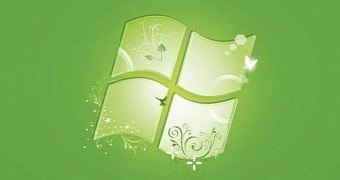Windows 7 is no longer a supported operating system, which means that the updates Microsoft published on January 14, 2020 were the last ones.
In other words, no other updates would be released for Windows 7 moving forward, and users are obviously recommended to upgrade to a supported operating system, no matter if it’s Windows, Linux, Mac, or Chrome OS.
While we’re not going to talk about the security risks of running Windows 7 after the end of support, there still are a few things that users need to know if they want to stick with this OS version.
Windows 7 can still be activated
The first of them concerns the activation of Windows 7. Despite no longer receiving security updates, Windows 7 can still be installed and activated just like before. This means that if you clean-install Windows 7 on your device, you should encounter no issues activating it, as the whole thing should work normally as it did back in the days when the OS was still receiving updates.
Microsoft too confirms that activating Windows 7 still works, but it recommends users to make the jump to Windows 10 as soon as possible (as a side note, Windows 8.1 also receives updates until 2023, so this OS version could be an option too):
“Windows 7 can still be installed and activated after end of support; however, it will be more vulnerable to security risks and viruses due to the lack of security updates. After January 14, 2020, Microsoft strongly recommends that you use Windows 10 instead of Windows 7,” Microsoft says.
Internet Explorer is dead too
In addition to Windows 7, Microsoft also discontinued Internet Explorer 11 for this Windows version, so if you don’t upgrade, you need to find a different browser.
Internet Explorer will continue to run normally on a Windows 7 device, but no further updates would be released, which means that you’re going to miss on a lot of new features that will be available in third-party browsers.
Right now, Google Chrome is the leading desktop browser out there with nearly 65% market share, and Google has already announced support for Windows 7 for at least 18 more months.
If you want to stick with Microsoft software, the new Chromium-based Microsoft Edge browser will also run on Windows 7 and receive updates until July 2021.
Free upgrades to Windows 10 are still available
Back in 2015 when Microsoft launched Windows 10, it also released a free upgrade promo, technically allowing Windows 7 to upgrade to the new OS version at no cost. The promo ran for one year, so in July 2016, the free upgrades were supposed to end.
However, unofficially the free upgrades were still allowed, and they are still possible today with the Media Creation Tool. This is because, at least according to an alleged Microsoft employee, the company wants as many users on Windows 10 as possible, so it doesn’t necessarily care where the upgrades come from.
In other words, even though the support for Windows 7 has come to an end, you can still upgrade to Windows 10 without paying for a license. Of course, there’s no guarantee that this method would continue to work in the future, and this is why it’s important to perform the upgrade as soon as possible to make sure the whole thing doesn’t come with an extra cost.
Microsoft says that when moving to Windows 10, it’s better to do a clean install, so I’d recommend you to first perform the upgrade with the Media Creation Tool to benefit from the free upgrade and then start from scratch with a fresh installation of Windows 10.

 14 DAY TRIAL //
14 DAY TRIAL //